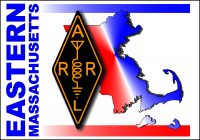Joe Fitzgerald, KM1P, writes on the Sci-Tech ARS mailing list:
[New England Sci-Tech Amateur Radio Society] is working with AMSAT to help make a positive ID of these new satellites for inclusion in the AMSAT orbital elements distrubution. If you are so inclined, please listen for any of these new birds and send any observations, i.e. early or late passes based on the Celestrak Two Line element sets described below.Our friends at Libre Space show 16 spacecraft using amateur frequencies on the recent Space-X transporter 7 launch.
https://community.libre.space/t/spacex-f9-transporter-7-2023-04-15-06-47-utc/10255
Celestrak has published element sets derived from Space-X deployment data. See https://celestrak.org/NORAD/elements/supplemental/sup-gp.php?FILE=transporter-7&FORMAT=tle
Celestrak also made an attempt to match Space-X derived TLEs to USSF tracked objects: https://celestrak.org/NORAD/elements/supplemental/transporter.match.txt but I don’t consider that authoritative. Note that RoseyCubesat-1 and INSPIRE-Sat 7 share the same element set which seems strange as I understand that they are two independent spacecraft.
We are particularly interested in INSPIRE-Sat 7. INSPIRE-Sat 7 carries a 435.200 MHz telemetry channel with BPSK mode – GR3UH 9k6 along with an FM transponder and student experiments to be activated after on-orbit checkout.
The following is from https://www.uvsq.fr/inspire-sat-7
“To receive the telemetry, a software has been developed: KissTool . It is available for Windows & Linux:
Linux: https://site.amsat-f.org/download/118791/?tmstv=1680945385
Windows : https://site.amsat-f.org/download/118784/?tmstv=1680945385
The user manual is available in French ( https://site.amsat-f.org/josast-kisstool/ ) and English ( https://code.electrolab.fr/xtof/josast/-/blob/27-new-application-for-spino/ApplicationKissTool/src/site/markdown/UserManual.md ) ”
de KM1P Joe

